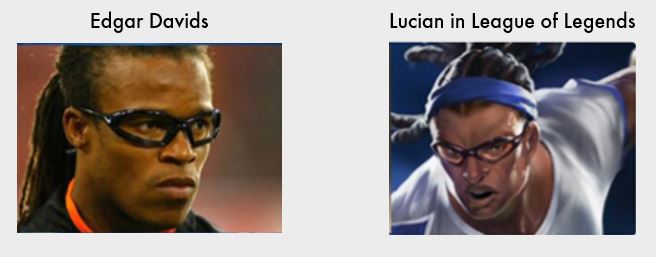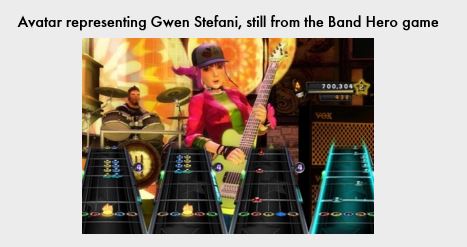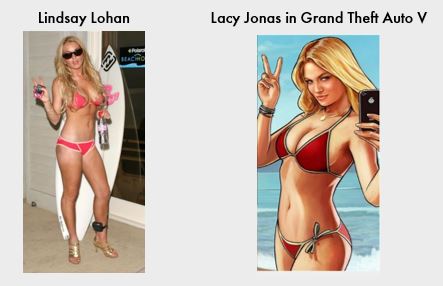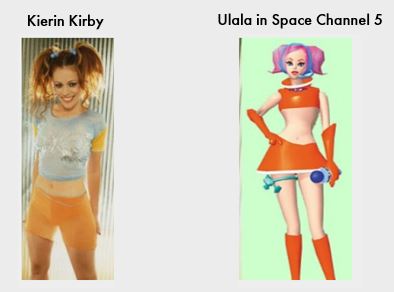Likenesses in computer games: Real-life people
Sometimes, a character in a game evokes an association with a real person. This similarity may be intentional or accidental. To ensure they are on solid legal ground, game developers should obtain the consent of the actual person to use his or her image. Failure to do so can result in severe consequences. In this text, we will discuss the rules for using likenesses of real, living people.
What is a likeness?
A person’s likeness refers to someone’s image, recorded for example in a drawing, painting or photograph, as well as the way a person is perceived and portrayed. Contrary to popular belief, likeness does not refer only to an image of a person’s face. It encompasses a range of personal characteristics, including natural features (e.g. eye shape), elements of characterisation or clothing (e.g. glasses, hairstyle, makeup, accessories), and even voice, deportment, behaviour, gestures or characteristic sayings. Thus, the likeness of a person is constructed of his or her recognisable features, by which we distinguish this person from others. Do you recognise the people pictured below? Just in case, the answer is given in the footnote1.

Consent—in any form, but unquestionable
In principle, the likeness of an individual is protected by law. This protection varies depending on the territory. In Poland, likeness is protected as personal data or a personal good, but it is also protected by copyright law.
As a rule, dissemination of another person’s likeness requires consent. Consent may be given in any form, but it must be unquestionable (more about consent and its requirements here). Sometimes, consent may be given by a relatively simple statement, but usually, especially in the case of celebrities, actors or athletes, these are elaborate agreements regarding the commercialisation of likeness. Game developers must take into account that in practice, a fee is charged for granting consent to use a person’s likeness.
The sanctions for disseminating a person’s likeness without the person’s consent vary depending on the country. However, basically they can be divided into three groups:
- Legal consequences resulting from infringement of likeness and possible breach of the contract with the publisher or game platform providing access to the computer game (where the development studio has warranted that the game does not infringe the rights of third parties or it has obtained the necessary consent)—this can lead to costly litigation and sometimes also to the payment of damages
- Organisational and financial consequences, e.g. a need to withdraw from the market a computer game using likeness without consent, modify the disputed image or replace it with another one
- Image consequences, e.g. negative PR in the community, difficulties in building a community of players, or boycott of the game.
Examples from various jurisdictions discussed below illustrate the issues and problems most commonly encountered when using likenesses in a game. Of course, one should be cautious about copying legal solutions from these cases, as they will not always be applicable in Poland or other European countries due to the differences in legal systems.
Use of likeness without consent
In the world of computer games and e-sport, a dispute between Juventus footballer Edgar Davids and Riot Games Europe Holdings Ltd has echoed loudly. As a result of a lawsuit brought by Davids, the court had to rule on whether the use a player named Lucian in the League of Legends game infringed Davids’ likeness. Davids argued that distinctive elements of his image were used, in particular his unusual glasses and dreadlocks, and that the game character has the same statistics and parameters (physique, background and career) as him. The similarity was also noticed by players exchanging observations on internet forums.

A court in Amsterdam concluded that the audience for the computer game might have recognised Edgar Davids the footballer in the character of Lucian, as determined by the distinctive hairstyle, glasses and style of play similar to Davids’. Due to the infringement of rights to his likeness, Riot Games was ordered to pay damages to Davids.
Use of likeness with consent, but dispute over the scope of consent
A slightly different situation was encountered in a case brought by the band No Doubt. There it was undisputed that No Doubt entered into a written agreement with Activision Publishing Inc. authorising the use of the band members’ likeness, including vocalist Gwen Stefani, in the game Band Hero. The problem was a different interpretation of the scope of consent. No Doubt argued that the consent did not include the right to use Stefani’s avatar to perform songs by other artists (e.g. songs by the Rolling Stones sung by a male voice), but only songs by No Doubt. Activision claimed a completely different understanding of the consent. It also argued that it was using the avatar in accordance with common practice in music games of this type. The band demanded compensation from Activision and a ban on distribution of the game.

Ultimately, the case ended with a settlement. However, it offers the lesson that taking care of consent itself is one thing, and precise regulation of its scope and the conditions for use of the likeness is another, equally important task.
Illegal use of likeness, or mere inspiration?
Equipping an avatar with certain external features will not always be tantamount to use of someone’s likeness. Some game characters may be inspired, for example, by a person’s style. In that case, the person just provides the stimulus to give the game character certain characteristics. Inspiration itself does not constitute infringement of likeness. Below we point out examples of cases where, we believe rightly, the courts found only inspiration.
One of the most famous cases was initiated by celebrity Lindsay Lohan against Rockstar Games in connection with the character Lacy Jonas in Grand Theft AutoV. Lohan claimed that the avatar infringed her likeness. The court dismissed the claim. It found that Lacy Jonas was a satirical and non-distinctive representation of the style, appearance and personality of a beach-loving celebrity, but could not be equated with Lohan.

The case brought by singer Kierin Kirby (also known as Lady Miss Kier) against Sega ended in a similar way. Kirby claimed that the character Ulala from Space Channel 5 constituted a representation of the singer’s likeness. She pointed to the adoption of a general aesthetic mixing futuristic and retro elements, as well as particular elements of appearance and dress (e.g. pink hair tied in a high ponytail and platform shoes with knee socks) and certain sayings or phrases she thought were similar. The court dismissed the claims, citing sufficient “transformation” of the likeness. Under Polish law, this could be deemed to be permissible inspiration which does not constitute infringement.

However, it should be borne in mind that these cases could have been decided differently depending on the jurisdiction. The line between unauthorised use of likeness and permissible inspiration is a fine one and easily crossed. It is not a risk worth taking.
Are there any exceptions?
As we have already established, consent is the basis for safe dissemination of a third party’s likeness in a game. The law may provide for exceptions to the consent rule (e.g. Art. 81 of the Polish Act on Copyright and Related Rights of 4 February 1994), which will vary from country to country.
For example, as one of the exceptions, the Polish act provides for lack of a requirement to obtain consent when dissemination concerns the likeness of a well-known person whose likeness was made in connection with his or her performance of public functions, in particular political, social or professional functions. But a precise answer to whether and under what conditions the likeness of a well-known person may be used in a game is complex and always depends on specific factual circumstances, including primarily the image used, but also the content and purpose of the computer game. We wrote about the rules for using a public figure’s image, especially in the context of satire or criticism, here.
Despite this exception, it is worth remembering that some public positions may be subject to special protections. In Poland, for example, this applies to the office of President of the Republic of Poland. The Criminal Code makes it a crime to insult the President. This lesson was learned by the creator of a computer game which included shooting at images of Bronisław Komorowski, who was then President of Poland. Although the court of first instance convicted the game developer of insulting the President, the appellate court amended the judgment and discontinued the proceedings, finding that the act caused negligible societal harm. Among other things, the justification indicated that although the action crossed the boundaries of satire and was of an insulting nature, the court took into account that politicians should have a thick skin, and imposing punishment for such acts may have a chilling effect, deterring in the future any satirical activity towards politicians, including heads of state.
It is easy to cross the boundaries of using the likeness of well-known people. The creators of computer games should also take into account that the image of certain public figures may be protected by criminal law or other specific regulations, depending on the country.
A checklist instead of a summary
If a developer wants to use the image or likeness of an actual, living individual in a computer game, it should remember the following:
- In principle, the dissemination of a likeness requires the consent of the person in question.
- Consent can be given in any form (in writing, by email, or implied), but the consent must be unambiguous and unquestionable, and it is worth verifying that its scope is sufficient.
- Using the likeness without permission may result in legal, organisational, financial and reputational consequences.
- Inspiration by a certain person or their style is allowed, but the line between what is infringing and what is permissible inspiration is blurred and easily crossed.
- The law may provide for exceptions to the rule of obtaining consent to disseminate a likeness, but exceptions should be interpreted narrowly.
- Regardless of obtaining consent, the content and context the game must not be defamatory (e.g. portray a person in a false light, offend the person, etc), or otherwise the creator may be exposed to charges of infringement of personal rights.
- Rules for protection of likeness are territorial. Solutions provided, for example, in the US will not necessarily be analogous to those in Poland or other European countries. As a first resort, one should verify the law of the country of origin of the person whose likeness is to be used in the game.
The article is based on the authors’ lecture at the Game Industry Conference 2020 entitled “‘Any resemblance to real persons is…’: Law vs. likeness.”
Dr Monika A. Górska, Lena Marcinoska-Boulangé
1 Left: Mike Tyson (this article does not address the issue of protection of the tattoo itself and the possible rights of the author of the tattoo, which in certain circumstances might constitute a work within the meaning of copyright law); centre: Elton John (source: https://www.alebilet.pl/blog/elton-john-niezwykla-historia-brytyjskiej-legendy-muzyki/); right: Donald Trump (source: http://mitologiawspolczesna.pl/dlaczego-krawat-trumpa-jest-taki-dlugi/).

